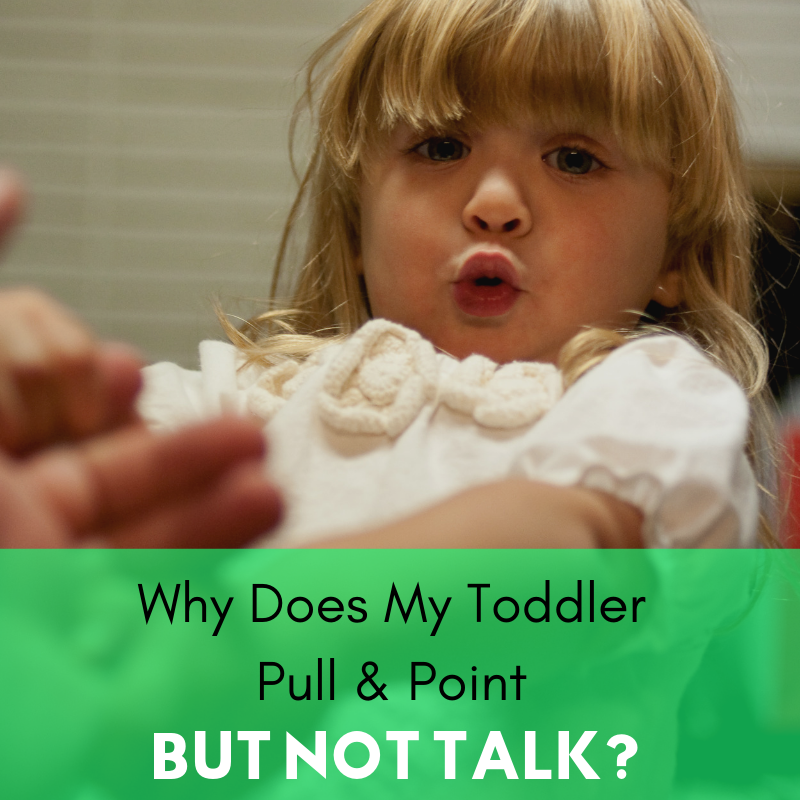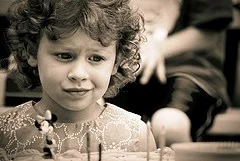Why Does My Toddler Pull and Point but Not Talk?
Why Does My Toddler Pull and Point but Not Talk?
Every so often a My Toddler Talks reader emails me with a question.
I find that if one person takes the initiative to write me, it probably means there are many others who have the same concerns.
Here’s the question that motivated me to write this 2 post series.
“Our toddler has gotten into this habit of pulling us to, pointing to or handing us the things she wants without actually saying or making any sound when she wants it. If we don't give her what she wants she start screaming and crying (literally). I don't want to reward the screaming behavior but I also want to encourage her to speak, so I'm a little stuck there.”
Photo Credit: deltaMike
Since the answer to this question is quite involved, I’m going to divide my response into 2 posts. For this post, I will address why a toddler would pull, point, or hand over items instead of trying to talk. The next post I will share tips.
Here we go!
My toddler pulls, points, or hands over items because…
It’s been somewhat effective in the past.
A child may use more basic modes of communication because she has had success with them.
For instance, she pulls you over to the refrigerator because you assume she wants to eat or drink, so you give her a favorite snack. She points to the banana because you assume she’s hungry. She hands you a wind-up toy because you assume she wants you to wind it up. Notice how I’m using the word assume? When a child doesn’t yet have the words or more sophisticated signs or gestures to effectively communicate, we often have to assume what a child wants or needs. When we make the wrong assumption or honestly have no idea what she wants or needs, what happens?
Photo Credit: peter.clark
Does not yet understand that certain gestures (e.g. pointing), signs, and words have meaning.
Before children start saying their first words, they communicate by using certain gestures, sounds, or body movements (e.g. pulling you to something, raising hands to be picked up, etc.) these are known as pre-linguistic or pre-symbolic gestures. In typical development, these gestures progress to symbolic gestures, like pointing and signs and finally verbal language. When a child understands that their actions, sounds or words are meaningful and represent something (e.g. tapping finger tips means more), they are paving the way for more sophisticated language development. I should note that many children with autism tend to overly rely on pre-symbolic gestures such as, pulling or leading parents to what they want.
Photo Credit: Kevin N. Murphy
Has difficulty coordinating oral, fine, or gross movements needed for speech, signs or gestures.
Children with certain disorders or syndromes like childhood apraxia of speech, cerebral palsy, autism, as well as those with vision and auditory impairments and learning disabilities may have difficulty coordinating, controlling, and executing the movements required for speech and signing.
Accepting approximations of a word (e.g. ba for ball) or sign (e.g. taps fists together for more instead of finger tips) should be encouraged and accepted. Alternative means of communication can also be introduced to establish functional communication. If you have concerns, please notify your pediatrician and consult with a licensed and certified speech language pathologist.
Photo Credit: Kevin N. Murphy
They don’t know what else to do.
If a child hasn’t been introduced to signs or certain gestures or their communicative partners are not modeling and repeating new words, they won’t know what else to do!
We, the parents, the therapists, the educators, have to provide the signs, sounds, and words multiple times in a loving and reassuring manner. Humans are hard-wired for communication. Regardless of the diagnosis or severity, we all want to communicate. If your child is not yet communicating or struggling to, it’s not because he or she is stubborn. It’s because they need a little time and some support.
Photo Credit: TomConger
I hope you have found this post helpful. If you can think of any other reasons why a child may struggle to communicate, please comment below.
Stay tuned! Early next month, I’ll be sharing my follow-up post: 7 Ways to Get Your Toddler to Communicate.
Some other posts you may like:
5 Ways to Stay Hopeful When You Want to See Change Now




